Civic Center Park
Introduction
Text-to-speech Audio
Denver's Civic Center was established in 1868 and was designated a National Historic Landmark in 2012. The Civic Center includes the grounds of Civic Center Park, the Federal Revival Colorado State Capitol Building, the Georgian Revival Denver City and County Building, the Greek Revival McNichols Building (once the Carnegie Library), and the park's historic monuments and statuary.
Images
Alfred Dach Memorial in Civic Center Park (image from Historic Marker Database)
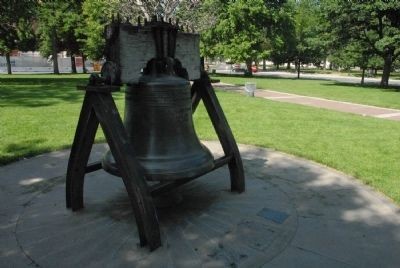
Colorado Soldiers Monument (image from Historic Marker Database)
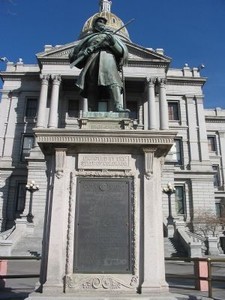
In Honor of Christopher Columbus Monument (image from Historic Marker Database)
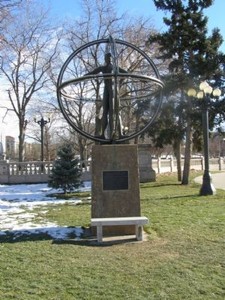
Joe P. Martinez Memorial (image from Historic Marker Database)
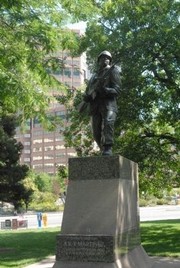
Sadie M. Likens Memorial (image from Historic Marker Database)
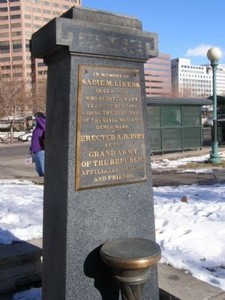
USS Colorado BB-45 Memorial (image from Historic Marker Database)
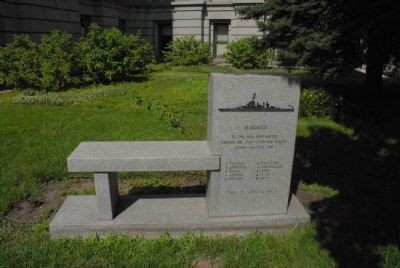
Voorhies Memorial Archway (image from Wikimedia Commons)
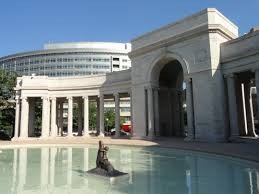
Civic Center Greek Theater (image from Wikimedia Commons)
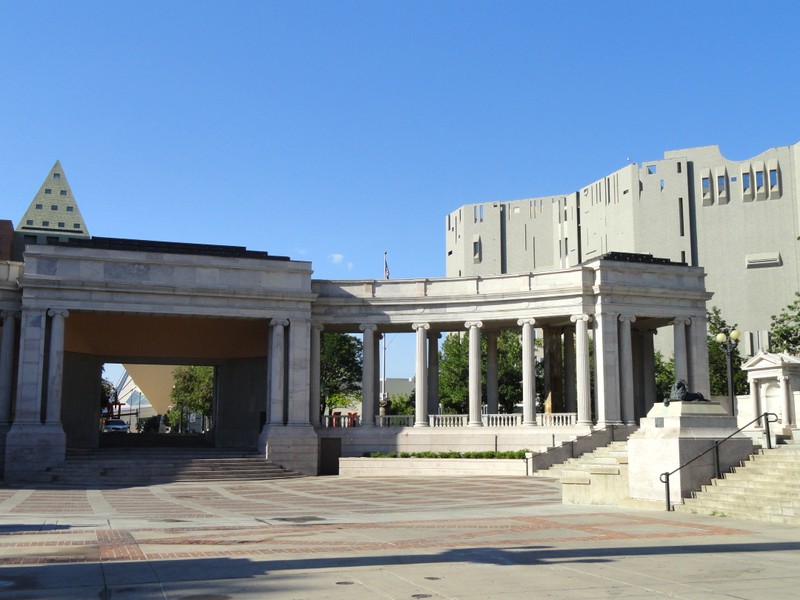
Backstory and Context
Text-to-speech Audio
In 1868, the land that is now home to Denver's Civic Center became the property of the state of Colorado, with construction on the capitol building beginning in 1886. Mayor Robert W. Speer, elected in 1904, spearheaded civic beautification and public projects as a part of the City Beautiful Movement, aiming to increase the city's appeal to newcomers and tourists. Speer created Civic Center Park, designed by Frederick MacMonnies, with the city's first public library (now the McNichols Building), designed by Albert Ross and funded by Andrew Carnegie, as its first building, completed in 1910.
Over the following decade, the park gained the French Beaux Arts Pioneer Monument sculpture (1911), which was also designed by MacMonnies; the open-air Greek Theater (1918), designed by Marean & Norton of Denver in collaboration with Edward H. Bennet of Chicago; the Voorhies Memorial Gateway (1919), funded by John Voorhies and designed by Denver Architects Fisher & Fisher; and sculptor Alexander Phimster Proctor's pair of bronzes, "Bronco Buster" (1920) and "On the War Trail" (1922). The models for these statues were Slim Ridings (a horse rustler for whom Proctor paid bail in order to finish "Bronco Buster") and Jackson Sundown (Nez Perce), Gray Eagle (Blackfoot), and Eddie Beaver (from Montana). Denver artist Allen True was commissioned to paint murals at the Greek Theater, the Voorhies Memorial Gateway, the State Capitol Rotunda, and the nearby Brown Palace Hotel lobby. In 1932, the City and County Building, designed by Edward H. Bennett, was completed. For a time, the Denver Art Museum was temporarily housed in parts of the public library and the City and County Building [1].
Colorado was the first state to celebrate Columbus Day; in recognition, Civic Center Park received the bronze and stone monument to Christopher Columbus (1970), sculpted by William F. Joseph and donated by Alfred and Anna Adamo. In 1989, anti-Columbus Day protestors covered the sculpture in fake blood but did no permanent damage. The Civic Center Historic District was listed on the National Register of Historic Places in 1974 and was designated a local landmark in 1976. In 2012, the National Park Service designated the Civic Center as Denver's first National Historic Landmark. Civic Center Park is also home to several military monuments, memorials, and a historical marker dedicated to streetcar transportation.
In 1955, Denver's Civic Center public library had been relocated and the 1910 building became home to the Denver Water Board and, later, other municipal offices. In the 1990s, it was renamed the McNichols building in honor of Colorado Governor Stephen McNichols, and from 2010-2012, it was renovated to remove non-historic elements and restore the interior and exterior. The building hosted the Biennial of the Americas in July of 2010, dedicated to the art and cultures of North, Central, and South America, and was officially reopened in 2012 by Denver Arts & Venues as a cultural center and public event space. Programming includes music, dance, and other cultural performances; lectures, workshops, and seminars; art, fashion, design, and film exhibitions; and other public events.
Sources
1. Civic Center Conservancy. "Civic Center Park." Accessed June 20, 2016. http://www.civiccenterconservancy.org/
2. Denver Arts and Venues. "McNichols Building History." Accessed June 20, 2016. http://mcnicholsbuilding.com/about/building-history.
3. Harrell, Charles T. "Alfred Dach." Historic Marker Database. August 14, 2011. Accessed June 20, 2016.
